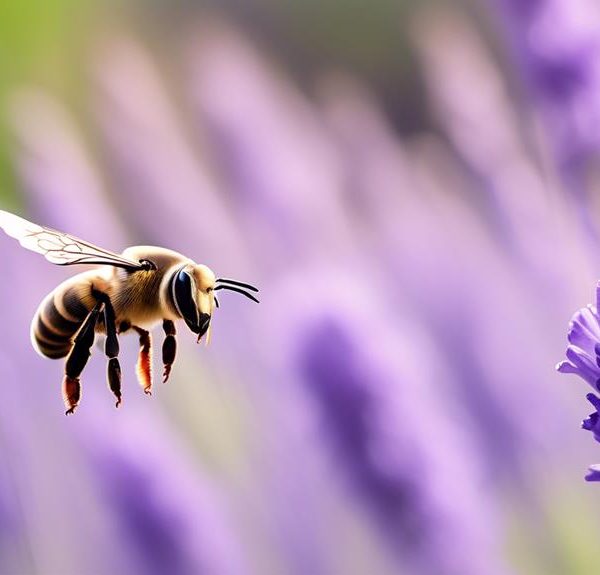Learn about the fascinating lifecycle of UK's leaf cutter bees and the vital role their timely hatching plays in nature's orchestra.
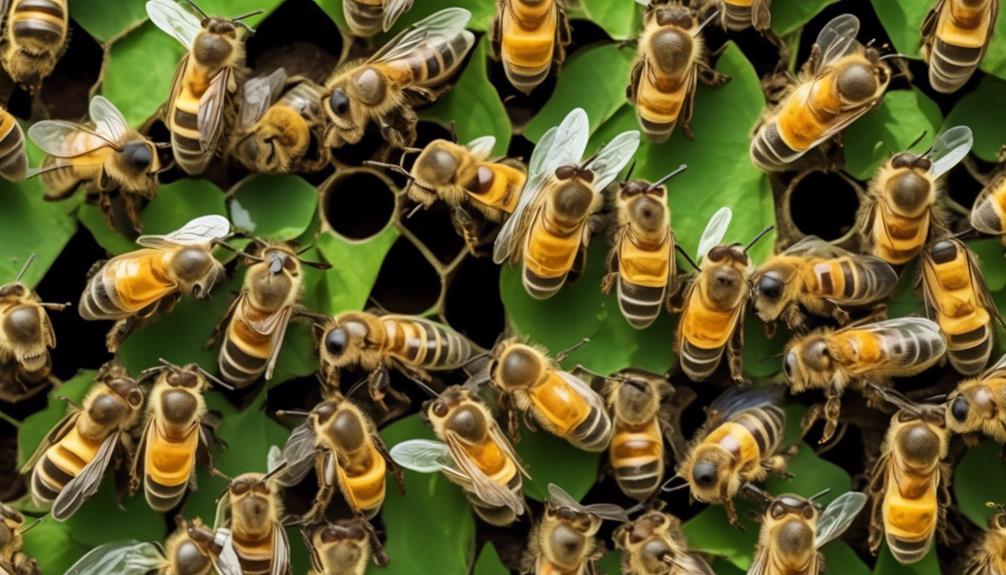
When Do Leaf Cutter Bees Hatch Uk
Dancing to the rhythm of nature's calendar, leaf cutter bees in the UK emerge from their cocoons, but do you know when this fascinating event occurs?
As you delve into the world of leaf cutter bees, you'll discover the intricate details of their lifecycle, hinging not just on the progression of the seasons, but also on specific environmental conditions.
And while we may be accustomed to the buzzing of bees in the summer, it's the less noticeable hatch of the leaf cutter bee that sets the stage for their important role in nature.
We're about to explore the factors that determine this timing, and why it might be more significant than you'd initially think. Shall we embark on this journey together?
Key Takeaways
- Leaf Cutter Bees in the UK hatch when temperatures rise above 14°C.
- Humidity levels of 30-70% are preferred for optimal hatching conditions.
- Adequate plant materials are necessary for breeding and egg-laying.
- Weather factors such as temperature and humidity can significantly impact the hatching process and survival rates of Leaf Cutter Bees.
Understanding the Leaf Cutter Bee
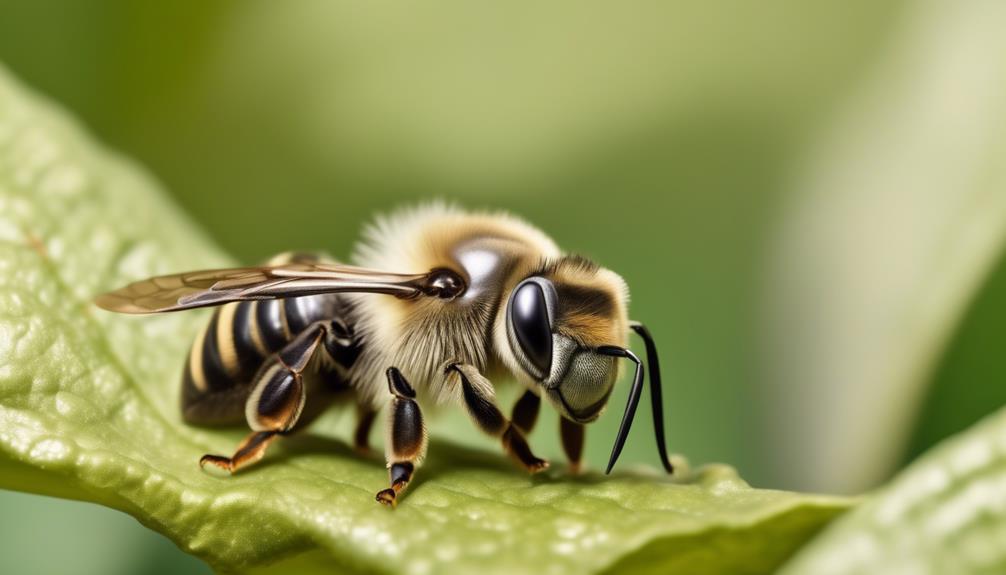
To fully grasp the uniqueness of the Leaf Cutter Bee, let's delve into its fascinating biology and behavior. You might be surprised to learn that these tiny creatures are crucial contributors to the ecosystem. Unlike honeybees that live in colonies, Leaf Cutter Bees are solitary, meaning each female is a queen in her own right, constructing and provisioning her own nest.
They're named for their distinctive behavior of cutting circular pieces from leaves. But they're not eating them – they're using them for nest construction. Each female bee cuts leaf pieces, carries them back to her nest, and painstakingly arranges them to create a series of cells. Within each cell, she lays an egg, provisions it with a mixture of nectar and pollen for the hatching larva, and seals it with more leaf pieces.
These bees aren't pests, they're pollinators. You'll often find them in gardens, buzzing around flowers, transferring pollen on their hairy bodies. They're less aggressive than honeybees and rarely sting, making them a gardener's friend.
Life Cycle of Leaf Cutter Bees

Building on our understanding of their unique nesting habits, let's now explore the life cycle of the Leaf Cutter Bees, a fascinating process that underscores their vital role in the ecosystem.
Your journey into the life of these bees starts in the early summer, when female Leaf Cutter Bees lay their eggs in the nests they've meticulously crafted from leaves. Each nest contains several cells, each holding a single egg along with a food supply of pollen and nectar.
The eggs soon hatch into larvae, which feast on the provided food until they've grown enough to spin a cocoon around themselves. This is where the magic happens: over the winter months, the larva transforms into a pupa, the stage where it reorganises into a fully formed bee, ready to emerge in the following spring or early summer.
The life cycle of the Leaf Cutter Bee is a testament to the intricate balance of nature. It's a cycle that's perfectly timed, ensuring that these bees emerge just when plants are in full bloom, ready for pollination. As you can see, each stage of their life cycle plays a crucial role in maintaining biodiversity and promoting plant growth.
Optimal Hatching Conditions in UK
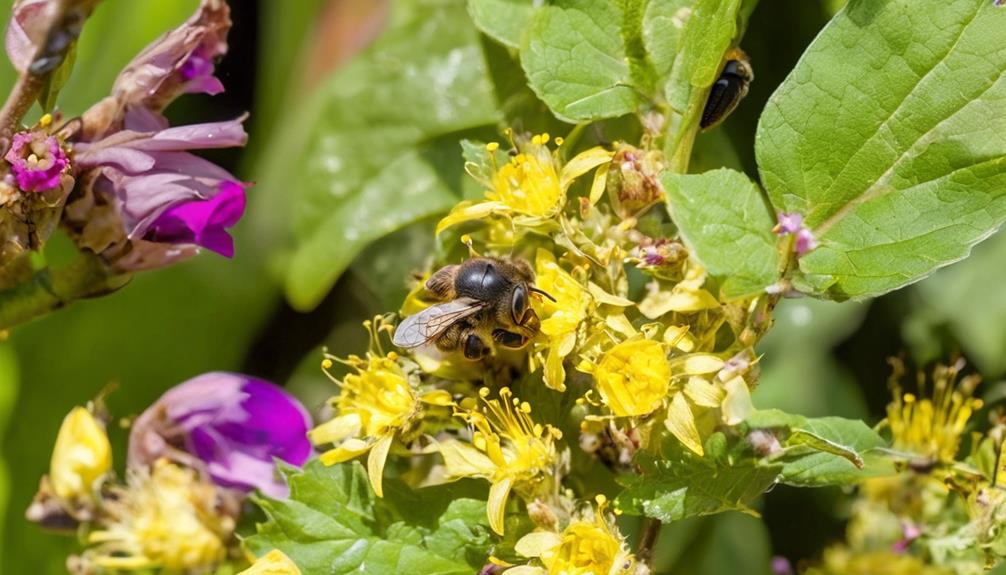
Understanding the UK's unique climate conditions is essential for predicting when Leaf Cutter Bees will hatch, as their emergence is intricately tied to specific environmental factors. These bees typically hatch when temperatures rise above 14°C, which in the UK, is around late spring or early summer. This is when flowers start to bloom, providing ample food sources for the newly emerged bees.
Humidity also plays a role in their hatching. Leaf Cutter Bees prefer a relative humidity of around 30-70%. Too dry or too wet conditions can be a hindrance, as they can interfere with the bees' ability to build nests and forage.
Additionally, the presence of adequate plant materials is crucial. They're aptly named for their habit of cutting circular sections from leaves to construct their nests. Without the right vegetation, they can't breed and lay eggs.
Impact of Weather on Hatching

Amid the ever-changing weather patterns in the UK, it's crucial to realise how shifts in temperature, humidity, and rainfall can drastically affect the hatching patterns of Leaf Cutter Bees. These bees, known scientifically as Megachile, are extremely sensitive to climatic changes, particularly in their early life stages.
An increase in temperature, for instance, can accelerate the growth of larvae, leading to premature hatching and a higher mortality rate. Conversely, lower temperatures might delay the hatching process, potentially causing the new generation to miss the vital early summer flowering period.
Humidity also plays an integral role. High humidity can foster mould growth in the bee's nests, threatening the survival of the eggs and the larvae. On the other hand, low humidity can cause desiccation, leading to inadequate hydration for the developing bees.
Encouraging Leaf Cutter Bee Populations
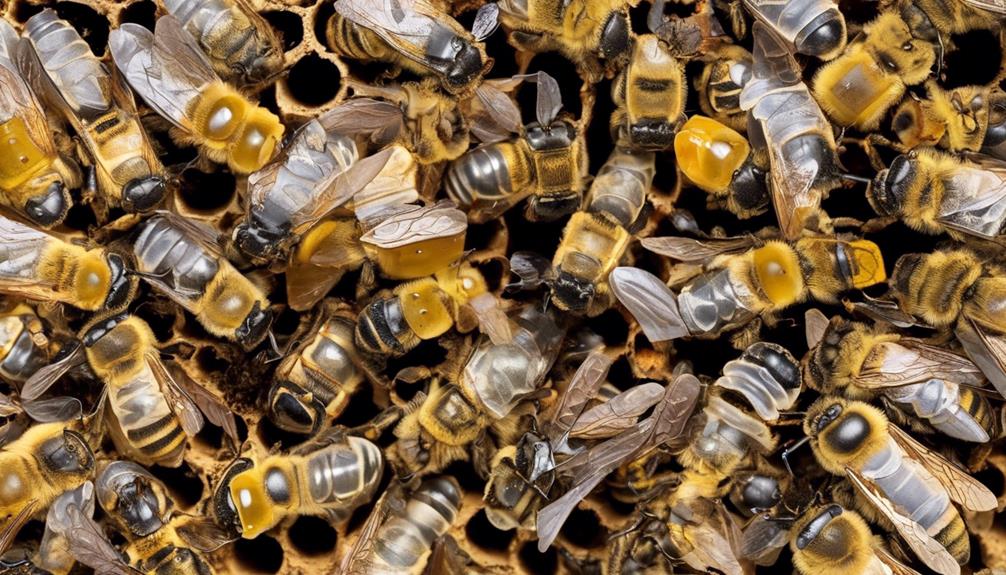
Frequently, it's up to you and other environmentally-conscious individuals to take action and implement strategies that can bolster the Leaf Cutter Bee populations in the UK. With declining bee numbers, your efforts are pivotal in maintaining a healthy ecosystem.
To start, it's essential to understand what Leaf Cutter Bees need to thrive. They require food, shelter, and safe nesting environments. You can make your garden hospitable for them by planting a variety of native plants, providing nesting tubes, and avoiding the use of harmful pesticides.
Here's a simple table to guide you:
Needs | Actions | Benefits |
|---|---|---|
Food | Plant native flora | Provides nourishment |
Shelter | Install nest tubes | Ensures safe nesting |
Safety | Avoid pesticides | Prevents bee deaths |
By focusing on these three areas, you're not just supporting Leaf Cutter Bees. You're aiding biodiversity, promoting pollination, and sustaining the health of your local environment. Remember, every action counts. Let's take a stand for these remarkable creatures and ensure their continued existence in the UK.
In this way, you actively contribute to bolstering Leaf Cutter Bee populations, playing your part in preserving and enhancing the UK's fragile biodiversity.
Conclusion
So, you've delved into the world of Leaf Cutter Bees. You've understood their lifecycle, discovered when they typically hatch in the UK, and how weather impacts this process.
Remember, fostering these bees is vital for our ecosystem. By creating favourable conditions, you can contribute to their survival. Keep an eye out for these fascinating creatures and their iconic leaf-cutting behaviour! Their presence signifies a healthy environment.

